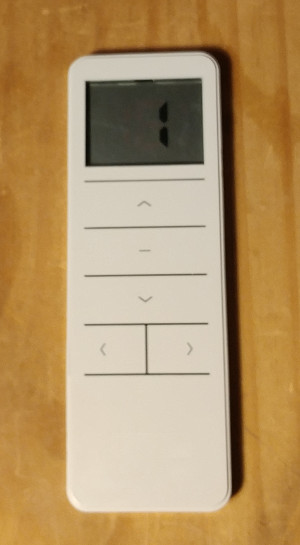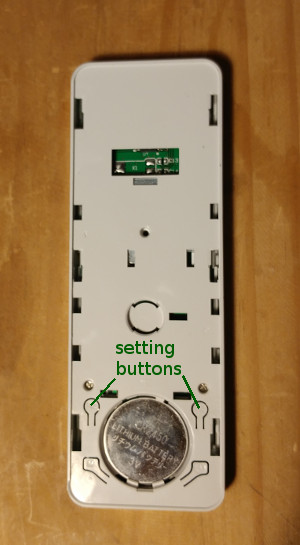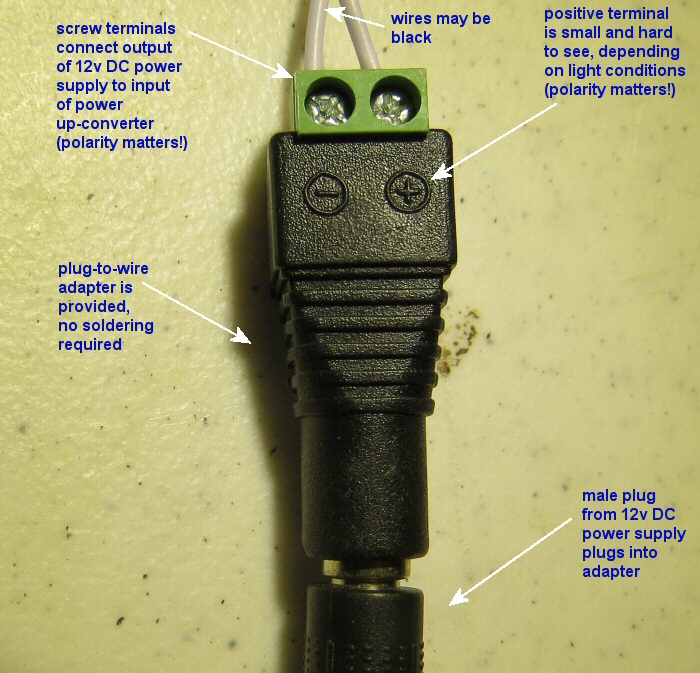Bottom-Up Window Blinds and Skylight Shades: Part 2 - Cloning A Remote
In the previous article we looked at the various component pieces that make up the ShadeSlider™ kit. In this article we'll take a look at cloning the motor to an existing remote control channel.
The ShadeSlider™ system comes with a pre-programmed remote control, but you should be aware that the motors use the same remote control digital radio protocol as our standard roller shade motors, window/skylight openers, smart film, and drapery controls (CurtainCloser system).
If you already have some of our motors, you may want to clone the radio control signal to an existing wall remote. We also have a Z-Wave controller that can be used for the ShadeSlider™ system which would require cloning the zwave group controller.
You can perform the cloning procedure at any time because it does not involve touching the motor. Also, if you haven't yet connected the power supply, please refer to the section at the end of this page.
Cloning a channel is a simple operation; basically, you clone the signal from the master remote that came with the unit to your existing remote. This is done with the setting buttons on each remote control.
The pictures below show the master remote front view, and the master remote back view, with the cover removed. We have marked the 2 setting buttons on the back of the master - you can use either one as they both do the same thing.


It is important to understand that the remote control provided with the ShadeSlider™ system is already programmed as the MASTER remote. This should not be changed, but you can clone the radio control system up to a maximum of 20 other existing remote control channels.
Here is the cloning procedure:
- Make sure the master REMOTE is set to the master channel you want to clone; the next actions must be completed within 6 seconds of each other:
- Press and release the P2 button TWICE on the MASTER REMOTE that holds the master channel you want to clone, the motor will jog each time (see picture above for setting buttons - you can use either one).
If you are cloning to another remote:
- Press the P2 setting button once; the motor will jog, and the cloning procedure is done. PLEASE NOTE: If you have a multi-channel wall remote, there is no P2 button; just use the combination keypress of UP and STOP instead.
If you are cloning to the group transmitter on our Z-Wave controller:
- Press and release the setting button on the DCG-1R-RFT Radio Transmitter Module once, and it should flash once.
- At this point, you are finished - the Z-Wave transmitter module will control the motor, and the travel limits will not be changed. You can insert a wire into the N (common) connector and touch it to the open/close/stop terminals to test the operation.
Here is the 'un-cloning' procedure:
- Follow the exact same instructions as above; the motor will jog to indicate the channel was removed from the group transmitter (or the existing remote).
Please Note: Wait 10 seconds for programming cycle to complete before you clone another channel.
Attaching the Power Supply
The 12v DC motor uses a safe low voltage for operation; this also makes it suitable for RV and boating applications. For instance, it makes a great bottom-up shade for motorhomes - owners can maintain their privacy, but let in light at the same time. The same goes for apartment dwellers, or anywhere you might need privacy and light at the same time!
The picture below shows where the wires for the motor emerge from the frame. The wire on the left is for DC power, and our AC/DC power supplies come with a plug on the 12v output that will fit the DC jack on the end of the wire.
The wire on the right is the antenna wire that receives the digital radio signal from the remote control (or automation hub).
PLEASE NOTE: The antenna wire has been taped to the frame so that you can see it clearly in this picture, but you should not do this when installing the skylight shade (or bottom-up window blind). The frame is painted aluminum and for maximum range the antenna should not touch anything metal!

The 12v power supply you received uses a screw terminal adapter for an easy connection to the motor wiring; all you need is a small Philips or blade screwdriver to clamp the wires securely into the adapter (please note that the wire with the black stripe is the negative terminal). The following picture is a close-up of the screw terminal adapter, with the power supply plugged into it:

Using Screws for Mounting the Frame
PLEASE NOTE: You can drill pilot holes and use self-tapping screws to mount the frame, but you must be careful not to damage the motor (centered, in the top) or the cellular drive belts located in both sides. DO NOT ALLOW YOUR DRILL OR YOUR SCREWS TO PENETRATE FURTHER THAN 1/4 INCH INTO THE FRAME AT ANY LOCATION.
The motor is centered in the top piece. We have marked the picture below with an 'x' to show the safe drilling points on the top and sides. The same goes for the sides and bottom at the other end.

We sincerely hope you enjoy using these advanced motors; if you have any questions or require pricing, please feel free to contact us at any time!
Articles in this series:
Part 1: ShadeSlider™ Bottom-Up Blind & Skylight Shade: Component Layout, Motor Drive System
Part 2: ShadeSlider™ Bottom-Up Blind & Skylight Shade: Cloning Motor to Existing Remote (you are here)
Part 3: ShadeSlider™ Bottom-Up Blind & Skylight Shade: Frame Assembly, Drive Shaft Setup
